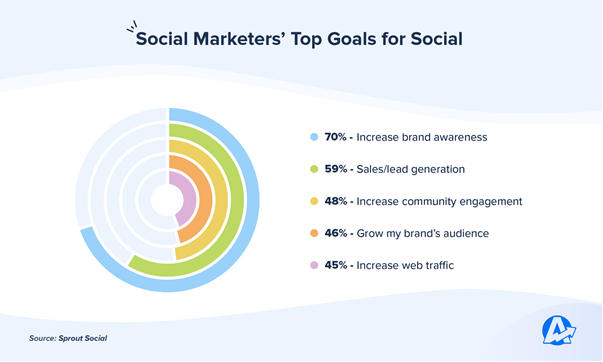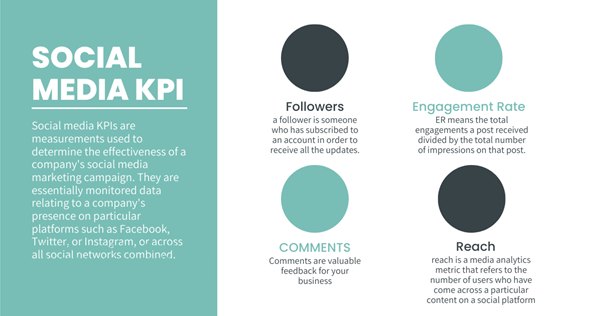Social media marketing is a big deal in today’s digital age–and for a good reason. From reach potential to ease of use, it’s the place to be if you’re building a business.
Social media platforms allow businesses to connect with many potential customers quickly and easily. Plus, they provide an avenue for sharing valuable content with their followers, which can help build trust and loyalty.
There are many reasons businesses use social media marketing. The most common reasons are to create brand awareness, generate leads & sales, and drive web traffic.

However, social media can also take up a lot of time if the business is not careful. It’s essential to create a social media strategy that includes goals and objectives and a plan for how you will use social media to achieve those goals. Additionally, setting aside time each day or week to dedicate to your social media efforts is important. Otherwise, you may find yourself wasting hours on social media with no actual results to show for it.
But how do you know if your campaigns are working and what to keep track of? That’s where social media metrics come in. Not only do they tangibly measure your efforts, but they also help you to get the most bang for your buck.
Top 7 Social Media Metrics That You Should Be Tracking in 2022
When it comes to social media performance, many people want a quick fix and lack the patience to track metrics. While it may seem tedious, it’s the only way to ensure campaign effectiveness. Putting in the extra effort will also help you improve over time and increase sales for your online business.
Wondering where to start? Keep these seven social media metrics on your radar to get the most from your campaigns.
1) User Engagement Rate
This is an essential metric to track as it shows how many users find value in your social media page or want more details. The user engagement rate is calculated as follows:
Engagement Rate = (Number of Shares/Likes/Comments on Facebook ÷ Number of Followers) x 100%.
For example, if a business has 1,000 likes and 500 comments on its Facebook page and 300 followers, the engagement rate would be 5%.
—————————————————————————————————————–
Use this metric to understand just how engaging your content is. A significant engagement rate shows a high level of user interest (which should be contextualized by considering comments or direct feedback).
Create valuable content to increase your content’s impact and drive engagement rate. If you observe an alarming drop, it may signify something isn’t right with your content or webpage (or perhaps other tweaks are needed).
2) Number of Followers
A significant number of followers may mean a greater level of engagement, provided that they’re legitimate followers (e.g., not bots or scammers) and your content is relevant. While it’s good to keep an eye on this number, don’t let it define your success, as there is other social media analytics to factor into the big picture.
An increasing follow count also feeds into the audience growth rate. Use the following formula to calculate the rate of follower growth over a specific period:
Follower growth rate = (The number of new followers obtained / the initial number of followers) X 100
For instance, if “Brand X” begins with 1000 followers and gets 250 followers in one month, they have a 25 percent audience or follower growth rate.
3) Number of Comments Posted
One of the most important social media metrics to track is the number of comments. Not only does this provide valuable insights about what resonates with your audience, but it’s also a great way to monitor direct feedback about your content.
When the number of comments increases, this greater engagement may lead to increased followers. Comments are also a great way for users to share or amplify thoughts or experiences in a conversational way. As a result, commenting allows discourse, attracts new audiences, and even provides greater clarity for curious viewers.
There will always be positive and negative comments, so remember that they’re meant to improve communication, develop relationships and build rapport. Comments are also quite valuable for gathering vital information or data, so don’t miss out by not monitoring them.
4) Number of Shares
This is another important KPI for tracking the success of your social media efforts. When a user shares your content, it’s shown to their network, which results in more visibility and traction. A post with high reach and engagement rates indicates a significant number of shares and increases brand awareness.

5) Impressions
This is another critical KPI in social media analytics that focuses on audience targeting. It’s often mistaken for reach, but they’re distinct metrics. While reach is the overall number of people who view your content, impressions measure the number of times your content is displayed (regardless of whether a user views it or not).
Use impressions to understand brand performance. As a business or a digital marketing agency, one of your primary goals is to reach as many people as possible, which can be monitored by tracking the daily impressions of your posts or advertisements.
A low impression rate indicates a poor level of engagement, which implies that you should evaluate content for any areas to improve on.
6) Social Referrals
A social referral occurs when a visitor arrives on your business page after clicking on a hyperlink on another social network. Asking your followers to share your content is a simple method to enhance your social media referrals and increase your business’ visibility.
Check the number of new visits or engaged users in your social media dashboard or analytics to ascertain this metric.
7) Reach
This audience-focused KPI is defined as the total number of distinct users who have seen your content on social media platforms. While it’s ideal for all your followers to see your content, it’s not always realistic.
Wondering why reach is always smaller than the number of impressions? That’s because your most engaged users and followers will likely see your content. For example, a social media advertisement or post may have millions of viewers, but its potential reach may only be in hundreds.
FAQs About Social Media Metrics
Now that we’ve covered the most important social media metrics you should know about, here are some FAQs and answers for further clarification.
1. What Are the Different Types of Social Media KPIs or Metrics?
Social media metrics can be divided into subcategories to track success. Experts have mainly divided these metrics into three parts, which are as follows –
a. Performance KPI: The metrics in this category gauge the overall effectiveness of your social media pages or channels.
b. Business KPI: These metrics measure milestones and results obtained in alignment with specific business objectives.
c. Optimization KPI: These indicators identify areas that require configurations or adjustments to increase engagement, impressions, and followers.
2. What Are the Four Most Important Social Media KPIs for Instagram?
Instagram is widely used by online businesses and even digital marketing agencies. To build a solid Instagram following, you need to track the following metrics:
- Reels and story engagement
- Reach
- The number of comments
- Audience growth rate
3. What Is a Social Media Dashboard?
A social media dashboard tracks metrics like engagement, subscriber or follower count, and audience analytics.
If you’ve got multiple KPIs to keep track of, consider using a customized or enterprise-level social media dashboard (such as Hootsuite, Sendible, or Sprout Social).
4. How Do You Measure Whether a Social Media Campaign Was Profitable?
Social media ROI is a KPI that measures just how much value was generated from your social media advertisements. After you’ve invested money into your initiatives, you want to know whether it was worth the spend–which is exactly why you should track social media ROI.
Wrap Up
Successful companies know the importance of using social media in their marketing strategies, and that’s why they invest time and resources into tracking metrics.
There are many different social media KPIs or metrics to track, but it all depends on your campaign goals and what you’re trying to achieve. In a nutshell, the most commonly used and important metrics are the number of followers, engagement rate, impressions on posts, and reach. Keep tabs on these metrics to ensure your company’s campaign is as successful as it could be.




